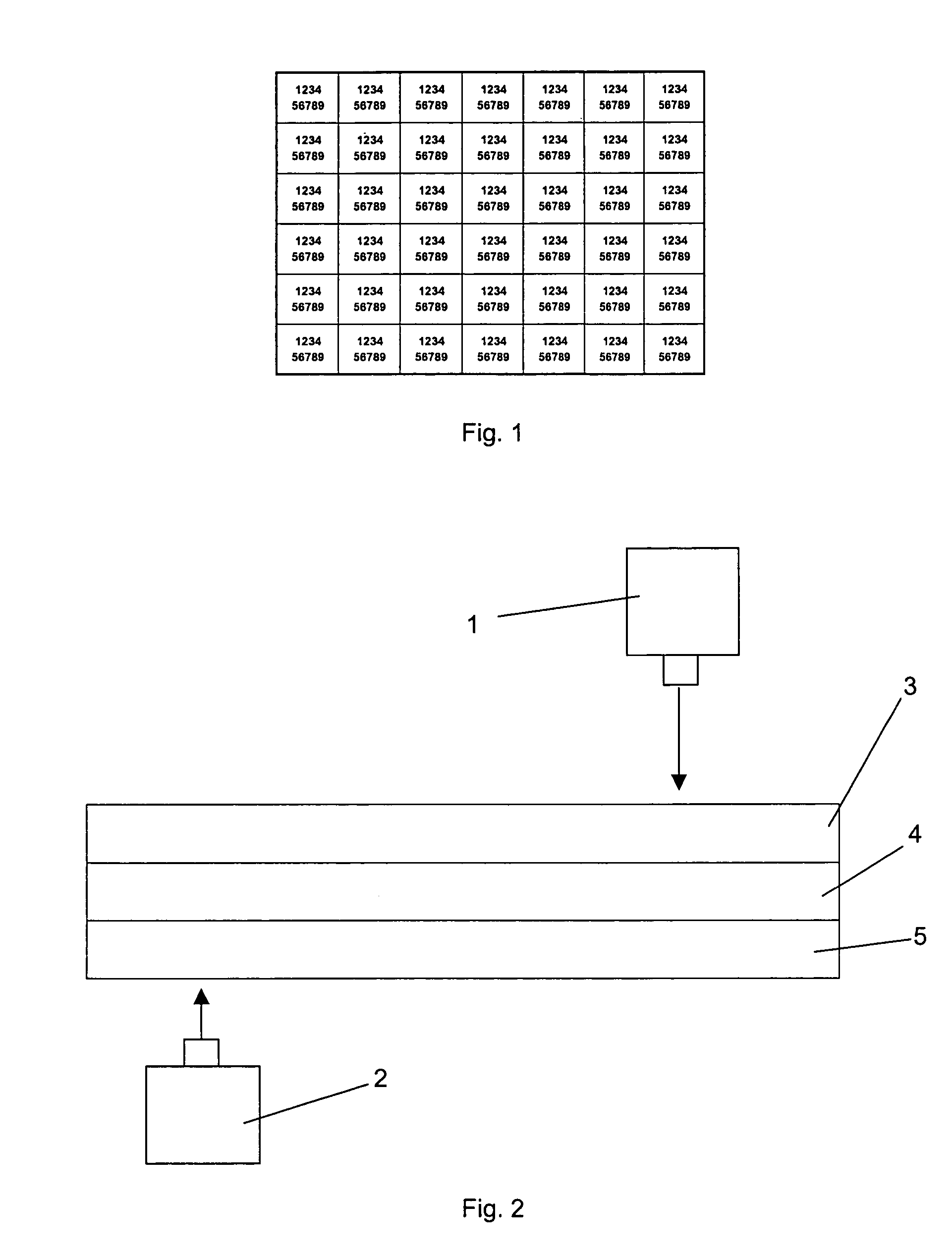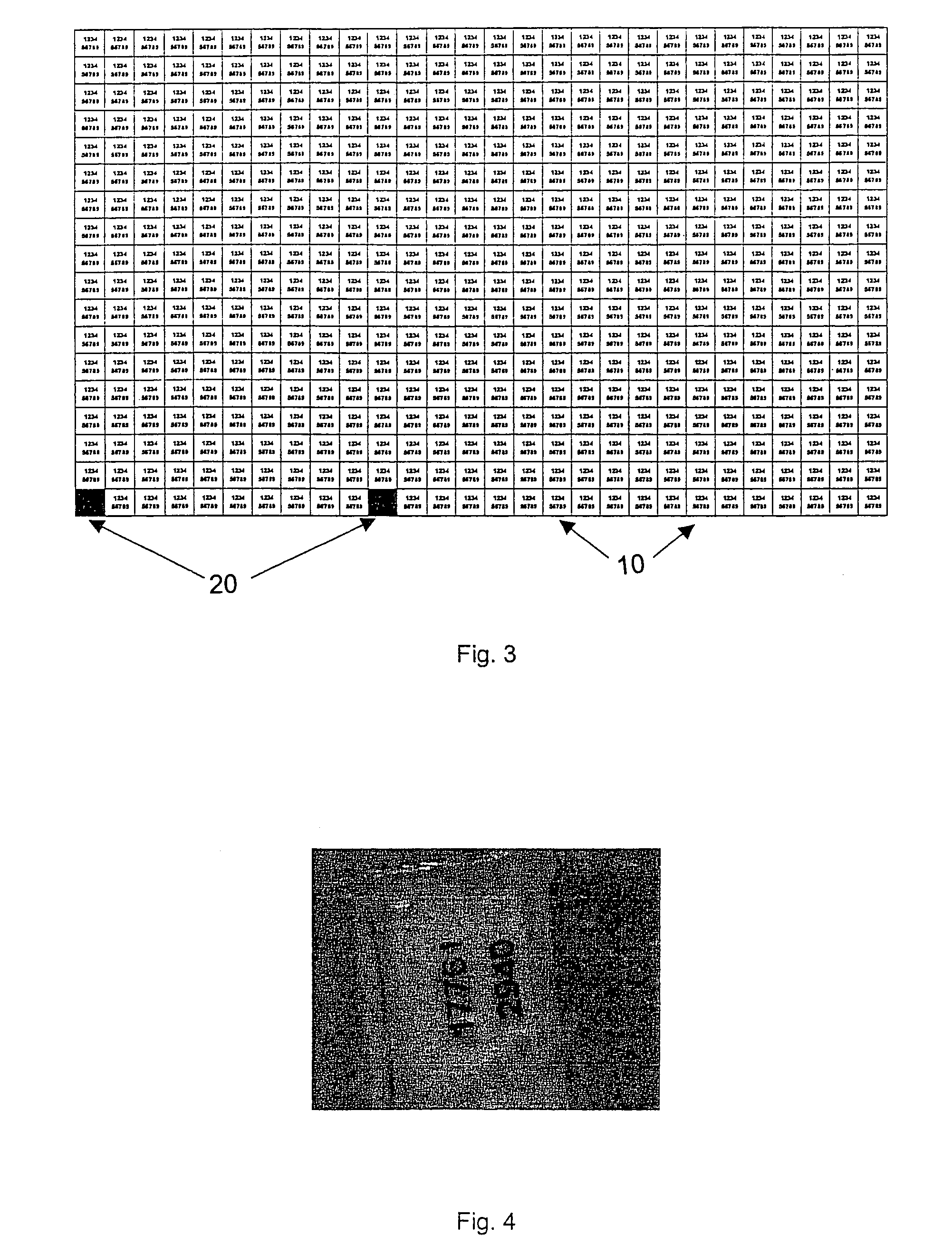Method for particle production
a particle and particle technology, applied in the field of particle production, can solve the problems of increasing production cost and excessive particle size, and achieve the effects of low cost, high throughput and good reliability
- Summary
- Abstract
- Description
- Claims
- Application Information
AI Technical Summary
Benefits of technology
Problems solved by technology
Method used
Image
Examples
Embodiment Construction
[0039]The present invention will be described further, by way of several non-limiting examples of a method of producing a batch of micro particles in accordance with the invention.
[0040]A sheet of suitable substrate typically 30 cm by 30 cm, such as a plastic / metal laminate with the metal layer applied via vacuum deposition or a plastic sheet, is adhered to a flat and inert support, preferably a flat sheet of glass by means of a suitable adhesive. A spray adhesive such as 3M Spray Mount Adhesive has been found to be particularly suitable.
[0041]The support, along with the substrate adhered thereto, is mounted on a stage movable in a plane perpendicular to a laser system. Movement of the stage in x-y coordinates is controlled by a computer.
[0042]The computer controls operation of the stage and the laser system such that the laser system marks the substrate with the desired code, preferably through the use of a mask marking several areas at once. The marking can be performed in several...
PUM
| Property | Measurement | Unit |
|---|---|---|
| thick | aaaaa | aaaaa |
| temperature | aaaaa | aaaaa |
| length | aaaaa | aaaaa |
Abstract
Description
Claims
Application Information
 Login to View More
Login to View More - R&D
- Intellectual Property
- Life Sciences
- Materials
- Tech Scout
- Unparalleled Data Quality
- Higher Quality Content
- 60% Fewer Hallucinations
Browse by: Latest US Patents, China's latest patents, Technical Efficacy Thesaurus, Application Domain, Technology Topic, Popular Technical Reports.
© 2025 PatSnap. All rights reserved.Legal|Privacy policy|Modern Slavery Act Transparency Statement|Sitemap|About US| Contact US: help@patsnap.com



